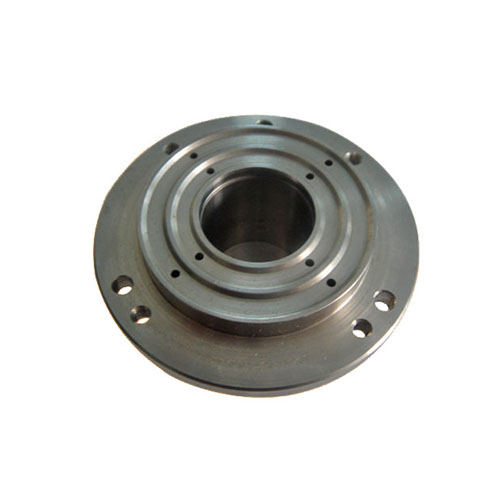Hello, welcome to Dalian Kaide Precision Machinery Co., Ltd!
Dalian Kaiman Technology Co., Ltd
Dalian Kaide Precision Machinery Co., Ltd
Contacts:Sun Zong
Mob:+86-13555929577
Tel:+86-0411-88026630
Email:dlkdjmjx@163.com
URL:www.dl-kd.com
Add:Fuquan Construction Group Hospital, Zhanqian street, Jinzhou District, Dalian
Dalian precision machining is an important component of modern manufacturing, playing an irreplaceable role in fields such as aerospace, automotive manufacturing, medical equipment, and electronic devices. With the continuous advancement of technology, precision machining will develop towards intelligence, ultra precision, new material applications, and green manufacturing, providing strong support for the progress of modern manufacturing industry.
During the machining process, various sensors and monitoring equipment are used to monitor machining parameters, tool status, workpiece deformation, etc. in real time. By installing force sensors, temperature sensors, etc. on the machine tool, real-time cutting force, cutting temperature and other parameters can be obtained. Once abnormalities are detected, the processing parameters can be adjusted or the machine can be stopped for processing in a timely manner to avoid the production of waste products.
Introduce common sources of precision machining errors in Dalian
Process system error
Machine tool error
Spindle rotation error: The spindle is the core component of the machine tool for achieving cutting motion, and its rotation error directly affects the machining accuracy. Including radial runout, axial displacement, and angular oscillation, it can cause roundness errors, cylindricity errors, etc. in the processed parts.
Guide rail error: The guide rail is the guiding reference for the moving parts of the machine tool, and its manufacturing and installation accuracy have a significant impact on the machining accuracy. The straightness error of the guide rail in the horizontal and vertical planes, as well as the parallelism error between the two guide rails, can cause changes in the relative position between the tool and the workpiece, resulting in machining errors.
Transmission chain error: The transmission chain of a machine tool is composed of transmission components such as gears, screws, nuts, etc. The manufacturing and assembly errors of each transmission component in the transmission chain will gradually accumulate during the transmission process, ultimately affecting the relative motion accuracy between the tool and the workpiece, resulting in machining errors.
Fixture error
Positioning error: The positioning element of the fixture is used to determine the position of the workpiece in the fixture. If the manufacturing accuracy, installation accuracy, or wear of the positioning element is not high, it will lead to inaccurate positioning of the workpiece, resulting in machining errors.
Clamping error: Excessive or uneven clamping force can cause deformation of the workpiece, especially for parts with poor rigidity such as thin-walled parts and slender shafts, where deformation is more pronounced, thereby affecting machining accuracy.
Workpiece clamping error
Improper clamping method: If the workpiece is not properly aligned or clamped securely during the clamping process, displacement or vibration of the workpiece during processing can lead to machining errors.
Clamping force deformation: Excessive clamping force causes elastic or plastic deformation of the workpiece, which returns to its original state after processing, resulting in processing dimensions and shapes that do not meet requirements.
Tool error
Tool manufacturing error: The manufacturing accuracy of the tool directly affects the machining accuracy, such as the diameter deviation of the drill bit, the tooth profile error of the milling cutter, etc., which can lead to inaccurate dimensions and shapes of the machined holes, grooves, etc.
Tool wear: During the cutting process, there is intense friction and cutting force between the tool and the workpiece, which can gradually cause the tool to wear out. After tool wear, the shape and size of its cutting edge change, which affects machining accuracy and surface quality.
Tool installation error: The installation accuracy of the tool on the machine tool spindle can also affect the machining accuracy, such as tool installation eccentricity, perpendicularity error, etc., which can cause the actual cutting position of the tool to deviate from the ideal position, resulting in machining errors.
measurement error
Measurement instrument error: The accuracy of the measuring instrument itself is limited, and there is a certain degree of error. Inaccurate calibration of measuring tools such as calipers and micrometers, as well as insufficient measurement accuracy of coordinate measuring instruments, can all lead to measurement errors in the results.
Measurement environmental error: Factors such as temperature, humidity, and air pressure in the measurement environment can affect the accuracy of the measurement results. For example, temperature changes can cause thermal expansion and contraction of workpieces and measuring instruments, resulting in changes in measurement dimensions.
Measurement method error: Improper selection of measurement methods can also result in errors, such as improper selection of measurement points and improper control of measurement force, which can affect the accuracy of measurement results.
Other errors
Error caused by cutting force: During the cutting process, cutting force can cause elastic deformation of the machine tool, tool, and workpiece, thereby affecting machining accuracy. Especially when processing parts with poor rigidity, the deformation caused by cutting force is more pronounced.
Error caused by cutting heat: The cutting heat generated during the cutting process can raise the temperature of the workpiece and tool, resulting in thermal deformation. The thermal deformation of the workpiece can cause changes in the machining size and shape, and the thermal deformation of the tool can affect the cutting edge position and cutting parameters of the tool, resulting in machining errors.
Errors caused by internal stress: Parts will experience internal stress during casting, forging, welding, and other machining processes. In subsequent mechanical processing, the balance of internal stress is disrupted, causing deformation of the parts and resulting in a decrease in machining accuracy.
Precision machining involves various processes, such as high-speed cutting, ultra precision grinding, electrical discharge machining, laser processing, etc. High speed cutting technology reduces machining time and tool wear by increasing cutting speed and feed rate, while improving surface quality. Ultra precision grinding technology utilizes high-precision grinding machines and diamond grinding wheels to achieve nanoscale processing of hard and brittle materials.
CNC lathe: mainly used for machining rotationally symmetric parts, such as shaft and disc parts. Through turning technology, precision machining of parts such as outer circles, inner holes, and end faces can be achieved. CNC milling machine: suitable for machining complex shaped parts such as flat surfaces, curved surfaces, and grooves. Through multi axis linkage, high-precision machining of three-dimensional surfaces can be achieved. Numerical Control Grinding Machine: Used for precision grinding of the surface of parts to achieve high dimensional accuracy and surface smoothness, commonly used in the processing of molds, bearings, and other parts.


Focus on us
National consultation hotline:
+86-0411-88026630
Tel:+86-13555929577
Email:dlkdjmjx@163.com
Add:Fuquan Construction Group Hospital, Zhanqian street, Jinzhou District, Dalian